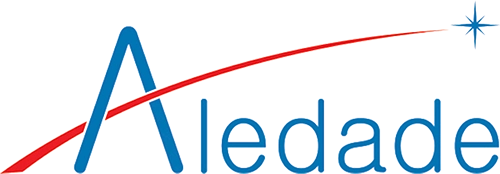Today, we submitted to CMS our comments on the proposed changes to the 2019 Physician Fee Schedule. This year was more exciting than most with CMS proposing significant changes to how physician’s bill for evaluation and management services i.e. the traditional office visit. We worked with our partner physicians and analyzed over 700,000 claims to inform our comments on this proposal. Below is our full comment letter and analysis to CMS.

Dear Administrator Verma:
Aledade (www.aledade.com) partners with 272 primary care physician practices, FQHCs and RHCs in value-based health care. Organized into twenty accountable care organizations across 18 states, these primary care physicians are accountable for over 240,000 Medicare beneficiaries. More than half of our primary care providers are in practices with fewer than 10 clinicians. We are committed to outcome-based approaches to determine the value of health care. We are committed to using technology, data, practice-transformation expertise and, most important, the relationship between a person and their primary care physician to improve the value of health care.
For our comments on the 2019 proposed physician fee schedule, we focus on those issues closest to value-driven health care and to independent physician practices, including:
- Changes to evaluation and management (E&M) documentation and payment
- New codes for physician time spent with patients that is not face to face
- Updates to the Quality Payment Program (QPP)
- Changes to the quality measures in the Medicare Shared Savings Program (MSSP)
E&M Documentation and Payment
We are pleased that CMS is seeking to reduce the burden of E&M documentation. Despite being outdated and misvalued, E&M codes have remained largely unchanged in the last twenty years. This is mainly due to a lack of consensus on the best way to revise the documentation guidelines and payments in the physician and payer community. We evaluated the proposed changes with a belief that reducing physician burden is a worthy and long overdue goal.
Deciding which E&M Level
We support CMS’s proposal to allow for two new, streamlined approaches to determining the E&M level.
- Basing the level of E&M solely on the complexity of the medical decision making required
- Relying on time as the deciding factor for the level of visit without the focus on counseling or care coordination
By providing two alternative methods of documentation, CMS would allow physicians to match their choice to their practice style and patient population. CMS would also gain experience with the different methods that will inform future efforts to improve documentation focused on worthwhile medical record keeping and care coordination.
However, our partner physicians have given us important feedback that the impact of CMS changes are limited. CMS documentation requirements are not the sole driver of the current level of documentation in most practices. Commercial payers or malpractice concerns would continue to necessitate documentation even if CMS finalizes these proposals. We encourage CMS to continue to work with the AMA CPT editorial panel to revise the guidelines at their source to minimize unnecessary documentation across the entire patient panel.
E&M Single Payment Rate
We cannot recommend that CMS finalize the single payment rate for level 2 through 5 E&M visits, even with CMS’s efforts to use G codes to minimize the variance that a single rate would cause. This decision informed both by feedback from our partner physician practices and from our analysis of the effects the rate and G-codes would have on practice revenue. Specifically, we analyzed 771,011 2017 claims of 213 Aledade practices. We provide details of that analysis and detailed feedback from our partner physician practices in the appendix. Our key takeaways are:
Neither the documentation not the single payment rate can be evaluated with consideration of interaction with other Medicare policies and with policies outside of Medicare from other payers and regarding liability
- Without the G-codes, the practices would lose 2.3% of their revenue from E&M
- With the addition of the primary care-focused GPCX1, the practices would gain 3.2%
- Practice level effects vary widely with a range of -19% to +41% (see graph below)
- To eliminate the negative effects on 99% of the practices, the extended time code, GPRO1, would have to be billed on 29% of Level 4/5 visits
- Beneficiary risk scores do not significantly account for practice level differences in utilization of level 4 and 5 visits versus level 2 and 3 visits
The graph below shows the distribution of change at the practice level:

This variation creates substantial revenue uncertainty for practices. Considering Medicare’s limited effect on overall documentation requirements faced by a practice and this uncertainty, we do not believe that payment rates are an appropriate tool to reduce physician documentation. We are also concerned about introducing harmful incentives. A single payment rate combined with the MPPR policy (discussed later) incentivizes frequent limited visits that inconvenience Medicare beneficiaries, at a minimum, and possibly create less cohesive care. While the G codes mitigate this to some extent, the incentive remains both to shorten visits and to prefer patients who can be well cared for in a short visit and patients who can easily make multiple trips to the office.
Home Visits
We support the CMS proposal to remove the requirement to justify the medical necessity of a home visit. Given the challenges of providing a home visit and the obvious convenience to the beneficiary, requiring justification is an unnecessary step.
Reducing the Least Expensive Procedure by 50 Percent
We cannot recommend that CMS finalize its proposal to require modifier 25 when a procedure is combined with an E&M visit. The savings from these policies are applied to the single payment rate by CMS, but the cost that they impose on our practices are not included in our analysis. This means that if both policies were finalized then the impact on practices would be more variable and more negative than in our analysis. However, we do not recommend this proposal for more than its interaction with the E&M single payment rate.
We disagree that there is significant enough overlap between resource use of procedures and E&M to justify a 50 percent reduction. The main overlap is in physical location of the office and administrative components that do not make up 50 percent of the RVUs for most procedures and E&M services. Nothing we have experienced with our partner practices would indicate that the savings to the practice for doing multiple services in a single visit would account for the 50 percent of the costs. Finally, this adds yet another financial incentive to the practice shorten visits. Even if CMS were to finalize the single payment rate for E&M we encourage CMS to not finalize these proposal in conjunction even if it means making adjustments to the single payment rate.
Non-Face-to-Face Physician Time
Chronic Care Management Services by a Physician or Other Qualified Health Care Professional
We support the creation of a separate code for CCM that focuses on and is valued on physician time. The lack of this code creates a disincentive for physicians to step into the care coordination process. By creating this physician valued code, CMS continues its movement to supporting comprehensive chronic care management that began with 99490.
Brief Communication Technology-Based Service
We support the creation of this code because we believe that this service falls between those which are obviously incidental and those which are defined and require direct financial support. However, we acknowledge that the low reimbursement of this code combined with the high administrative cost of the claims process creates concerns. In particular, we are concerned that the collection of the minimal beneficiary coinsurance could result in administrative collection costs that exceed the amount of the coinsurance. To the extent allowed by statute, we encourage CMS to allow practices to routinely waive the coinsurance for this code due to the high financial cost for the practice to collect it.
Updates to the Quality Payment Program
Promoting Interoperability
We support the proposal to apply the individual or group-level score for Promoting Interoperability (PI) for purposes of MIPS score even when the MIPS-eligible clinician participates in MSSP. Even in our more homogenous ACOs (same state, independent primary care), we have seen significant variance in the practice level-PI scores. As with any measurement program, high levels of measure performance requires not just good process and use, but a focus on measure monitoring. Some practices monitor their measures and seek to perform high on the measure. Other practices implement processes focused on workflow, not measure performance. Unsurprisingly the former scores better than the latter. Using the ACO average hides these differences and disincentivizes high scores. By moving the the score to the individual or group level, the choices made by the practice are accurately reflected in the MIPS score of the practice.
Qualifying Professional Determination
We support CMS’s proposal for making the QP determination at the TIN level in addition to the AAPM level. This is a particularly acute issue as the threshold rises to 50 percent. Even primary care-only ACOs receive attribution for only 60-75% of their patients, depending on ACO characteristics such as geography (rural areas have higher attribution than urban). The inclusion of specialists in the ACO, particularly specialists who do not drive attribution, quickly moves the ACO close to the 50 percent AAPM threshold. Having the 50 percent threshold at the AAPM level discourages additional inclusion of specialists in the ACO because it is difficult to predict whether a given specialist will take the ACO below the threshold and therefore remove the AAPM bonus for all ACO participants. We do not believe it is desirable for the QP determination to solely dictate whether an ACO includes a specialist. By moving the QP determination to look both at the TIN and AAPM level, CMS’s proposal to use an -and- methodology removes this disincentive to include specialists while maintaining the attractiveness of the AAPM bonus to ACO participants.
Quality Measurement in the Medicare Shared Savings Program
We support all the measure changes that are being proposed by CMS.
The table below is our measure-by-measure reasoning for this support.
Web Interface Changes

As we continue to look towards outcome measures over process measures, we urge development of a “time spent at home” (https://catalyst.nejm.org/time-spent-at-home-a-patient-defined-outcome/) or “days spent at home” (https://www.nejm.org/doi/pdf/10.1056/NEJMp1607206) patient-centered outcome measure using administrative data.
CAHPS Measures
We support both the inclusion of measuring ACO-45, “CAHPS: Courteous and Helpful Office Staff” and ACO-46, “CAHPS: Care Coordination” and the movement of ACO-7, “Health and Functional Status” to pay-for-performance. While it was not a proposal by CMS, we want to call attention to the increasing weight of CAHPS scores in accounting for differences between ACO performance. As an increasing number of Web Interface Measures top out (only three are not topped out) and as the claims-based measures are reduced in this proposal, the remaining measures for an ACO to distinguish themselves are in CAHPS. We are supporters of CAHPS measurement and do not believe CMS needs to take action in the final rule. However, it is something that CMS should monitor as the program progresses.
We look forward to continuing to work with CMS to incentivize more value creation in health care. Please contact me or Travis Broome ([email protected]) if you have any questions about our submission and/or if we can be helpful to you and your staff as you consider the finalization of this regulation.
Sincerely,
/s/
Farzad Mostashari, MD, ScM
CEO and Co-Founder
Aledade, Inc.



